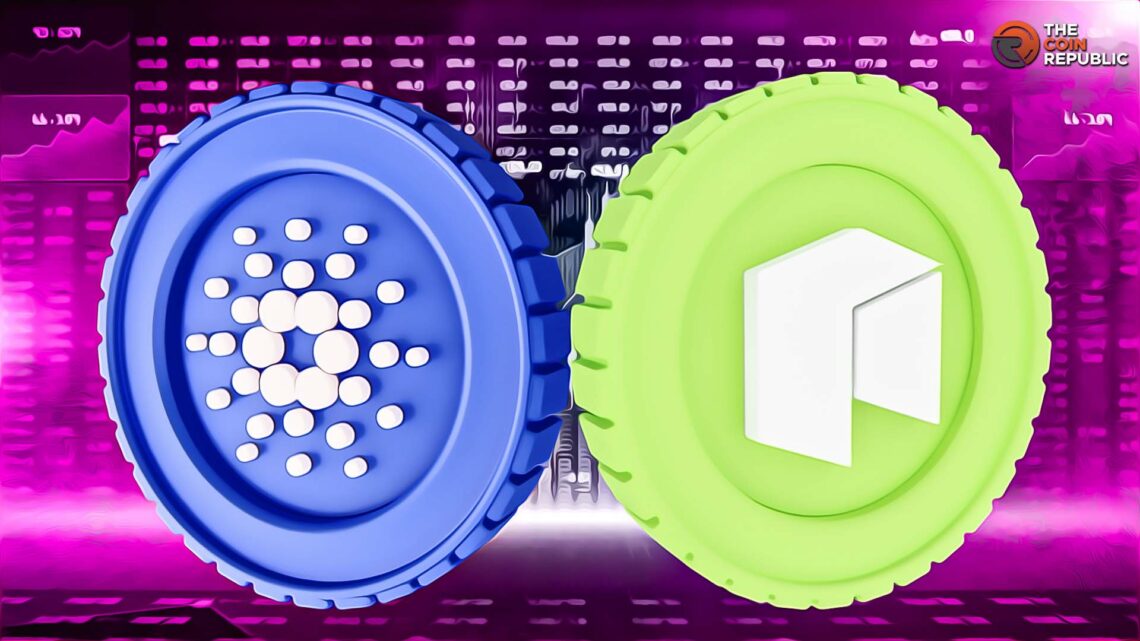- 1 To ensure equal opportunity to contribute to the network, the Cardano blockchain uses staking pools.
- 2 The Neo blockchain has 2 tokens: NEO (the governance token) and GAS (the fuel token).
How does Cardano work?
Cardano is a third-generation blockchain technology whose development was started in 2015 by Charles Hoskinson (Ethereum co-founder) and Jeremy Wood. It was created to address the challenges of the first and second-generation blockchains, hence creating an environment that deploys smart contracts and improves the scalability of transactions.
The Cardano blockchain was built and launched in 2017 by IOHK (an organization also co-founded by Hoskinson and Woods to develop blockchains for corporations and governments). In 2018, the Ethiopian government signed a memorandum of understanding with IOHK to use Cardano in its coffee supply chain.
The Cardano blockchain uses the Proof-of-Stake protocol called Ouroboros to achieve consensus. The creator of a new block is randomly selected by the amount of ADA staked. To ensure all ADA holders have equal opportunity in contributing to the state of the blockchain irrespective of their technical experience, the network uses staking pools. ADA holders can delegate their staked coin to a staking pool, this combined stake increases the chances of being selected as the new block creator and rewarded.
The Cardano blockchain comprises 2 layers: the settlement layer where transactions with ADA coins occur, and the computation layer where smart contracts are developed and dApps are deployed. This bilayer increases the network’s scalability.
ADA coin is the native cryptocurrency of the blockchain. It was named after the English mathematician Ada Lovelace. ADA can be staked, traded, and given out as a reward for validating transactions. In 2021, the Cardano team developed a feature to let developers create custom tokens on the blockchain without creating smart contracts. This feature allows users to transact with multiple assets on the blockchain. In May 2023, the Cardano blockchain launched the Hydra protocol, allowing the network to process 1 million transactions per second.
How does NEO work?
Neo is an open-source blockchain developed in 2014 by Da HongFei and Erik Zhang as Antshares and rebranded to Neo in 2017. It aims to create a smart economy where the creation and management of digital assets are decentralized and free from third-party interference
The Neo blockchain has 2 native tokens: the NEO token, the governance token (holders vote on updates to the network state), and the GAS token, the fuel token that is charged for creating smart contracts. 100 million NEO token was created in the genesis block, half of which is used for the development of the network. The GAS token is generated as new blocks are added to the blockchain. The maximum supply of GAS is 100 million.
The Neo blockchain uses the delegated byzantine fault tolerant protocol to reach consensus. NEO token holders vote to pick consensus nodes and send their transactions to these nodes. A node is randomly selected from the consensus nodes to verify the transactions on a block. If 66% of the other nodes agree on the selected node’s verification, the block is closed and a new one is added. If less than 66% agree, a new consensus node is selected for verification.
In 2021, an upgrade to the Neo blockchain was launched. Neo 3.0 (N3) was implemented through a new genesis block that ran alongside the Neo legacy blockchain.

With a background in journalism, Ritika Sharma has worked with many reputed media firms focusing on general news such as politics and crime. She joined The Coin Republic as a reporter for crypto, and found a great passion for cryptocurrency, Web3, NFTs and other digital assets. She spends a lot of time researching and delving deeper into these concepts around the clock, and is a strong advocate for women in STEM.


 Home
Home News
News










